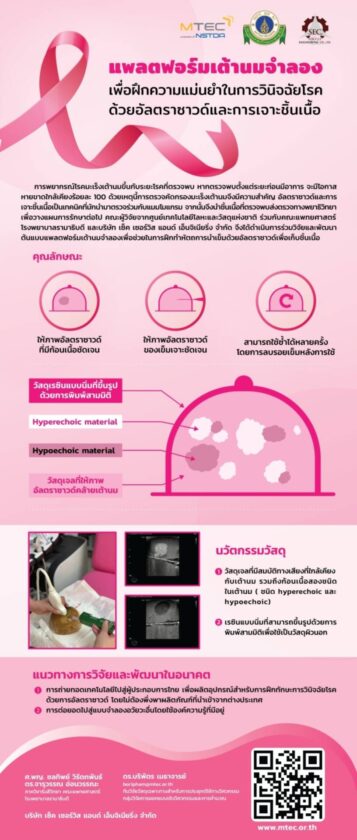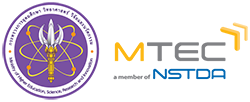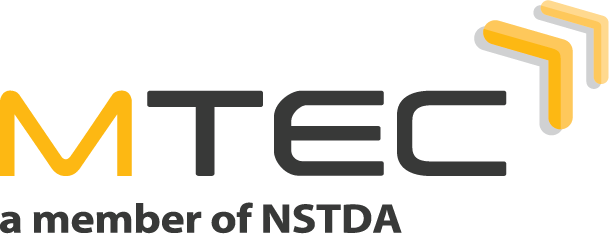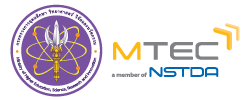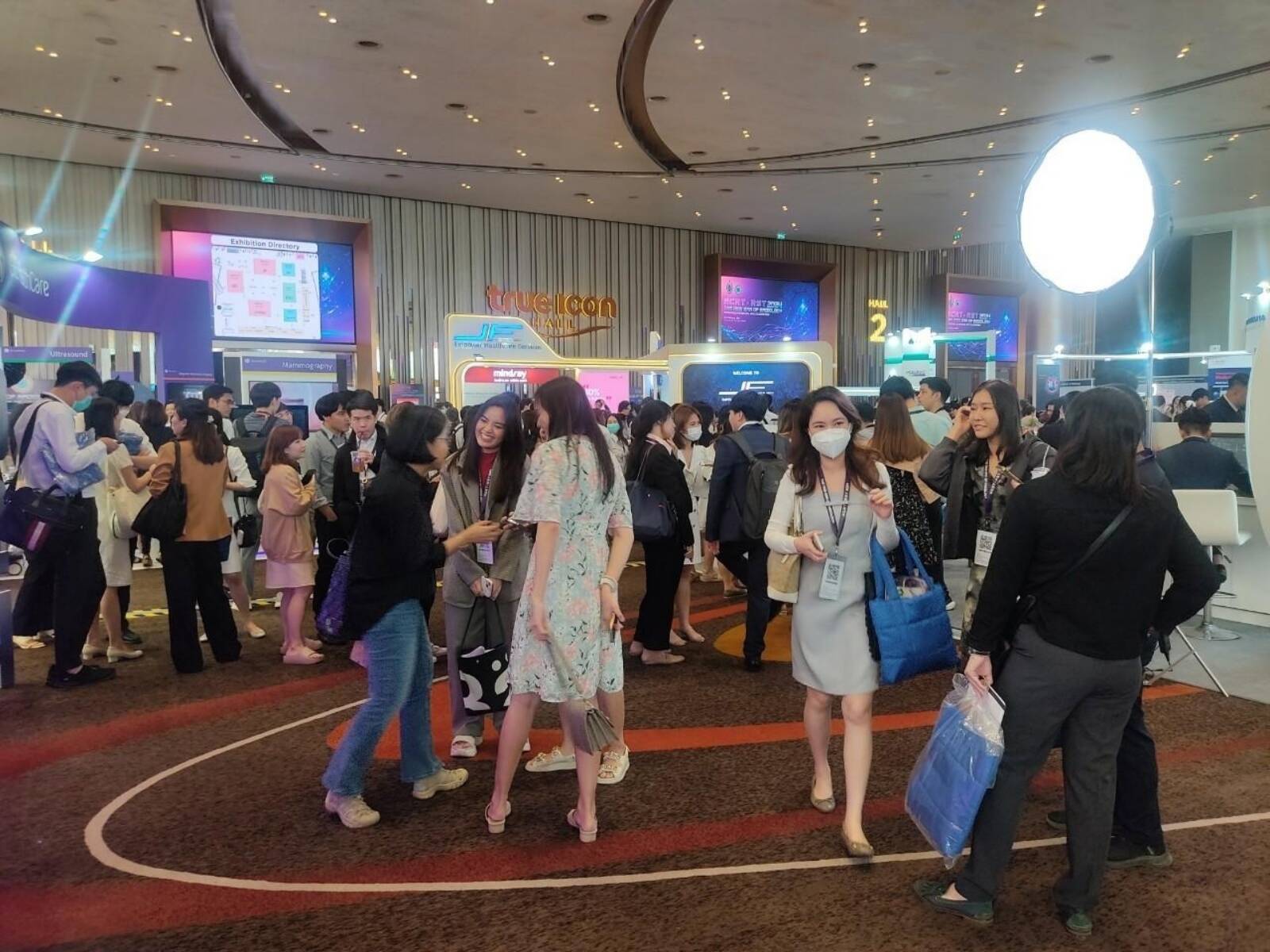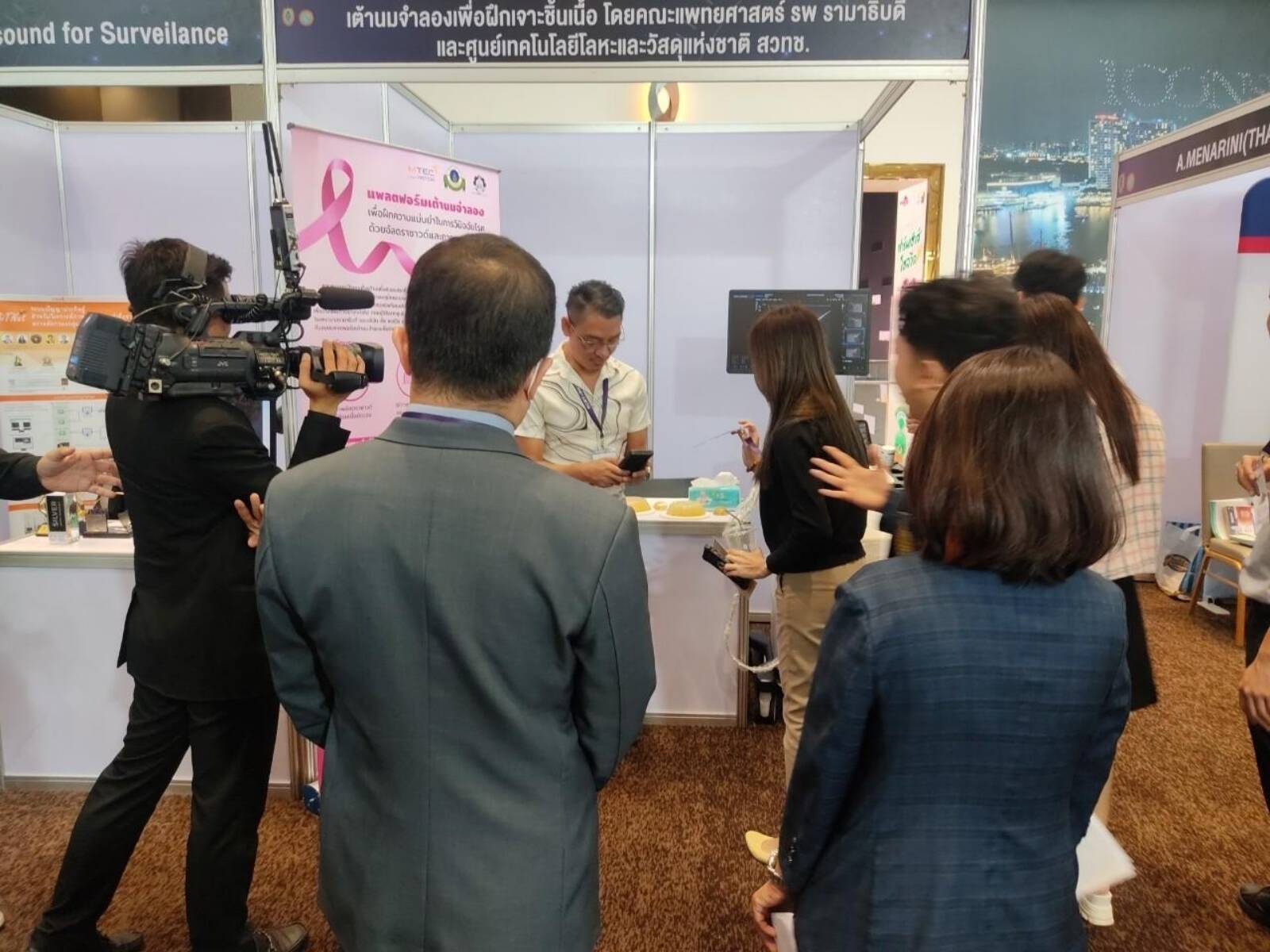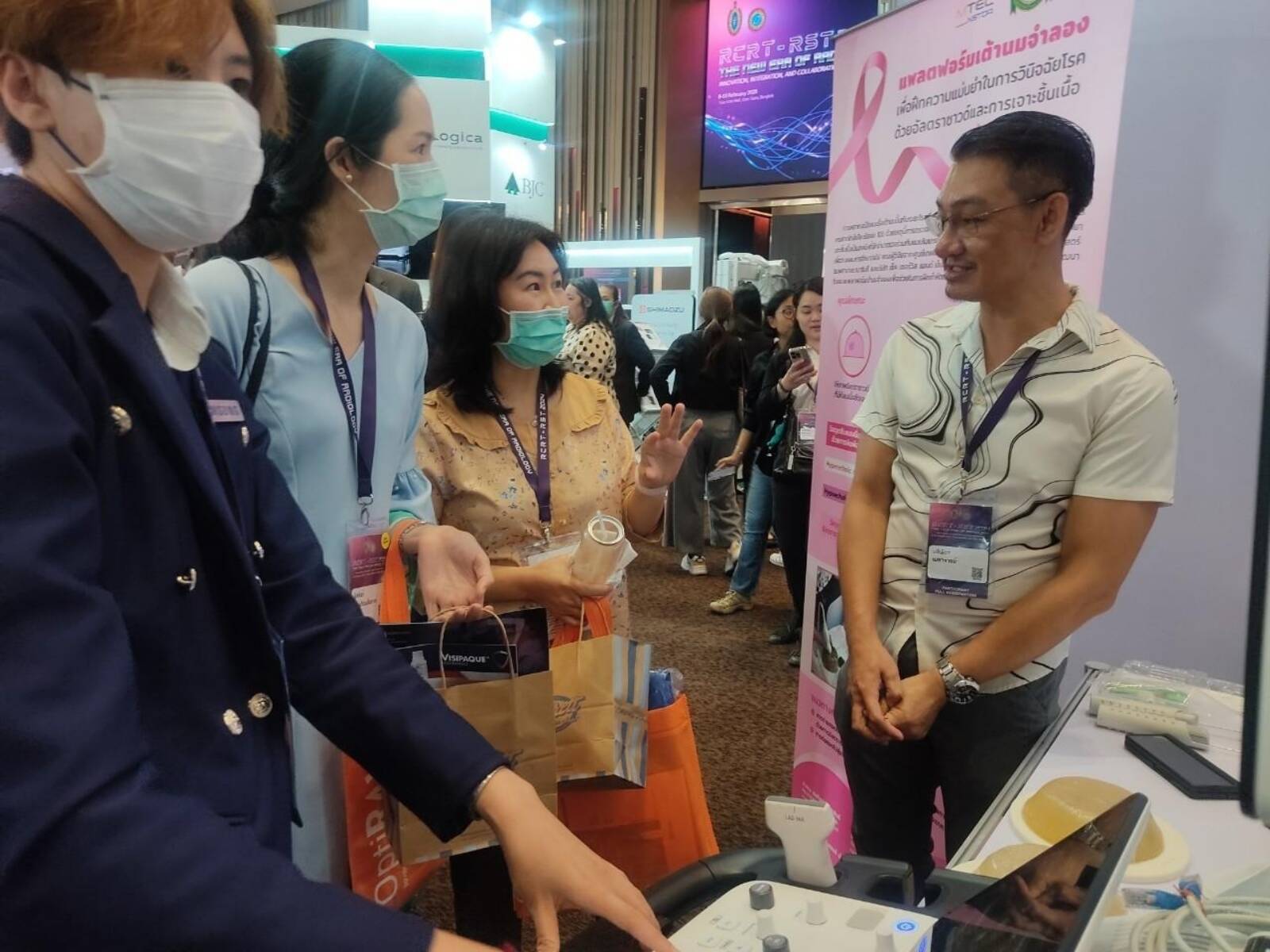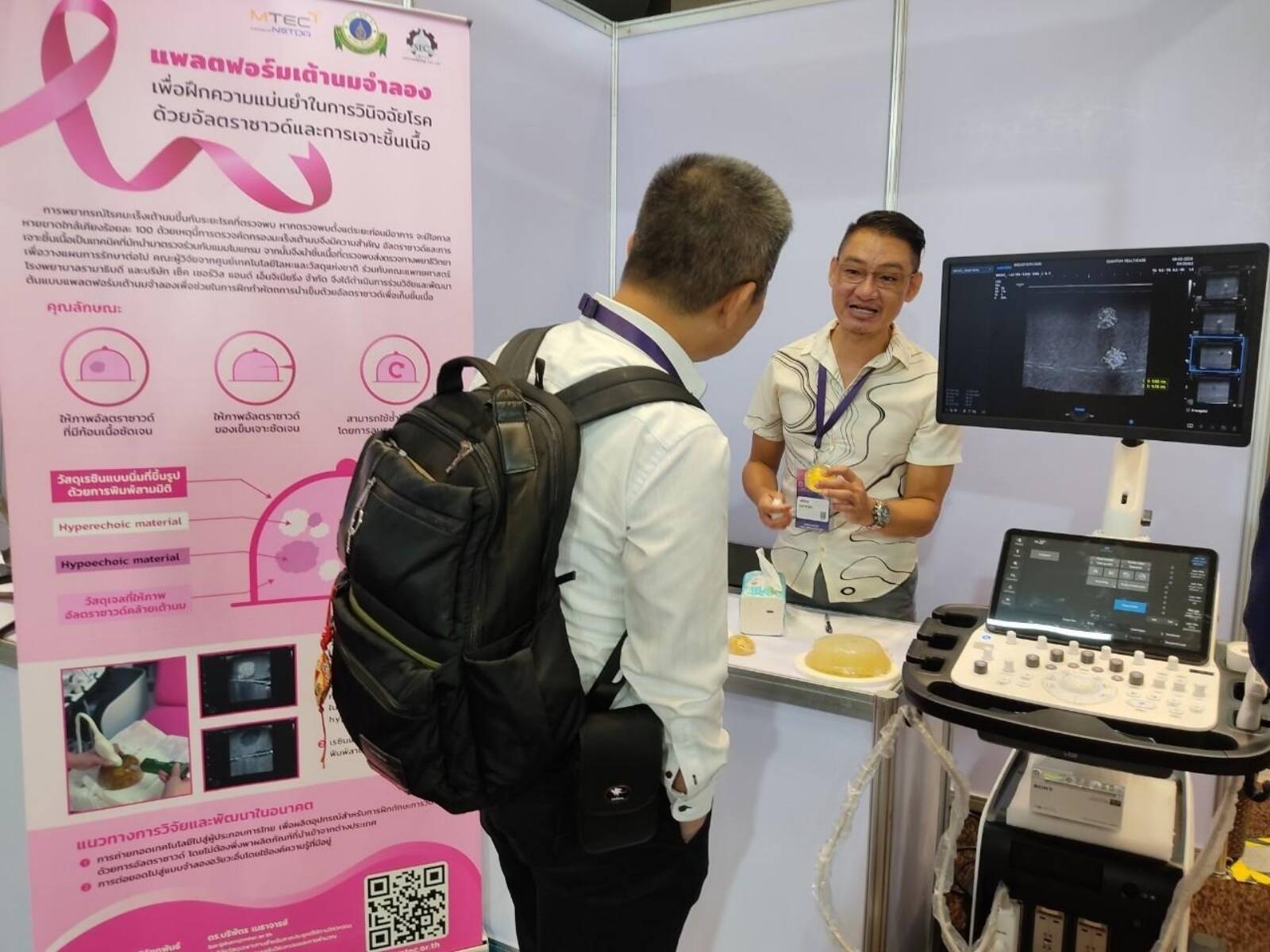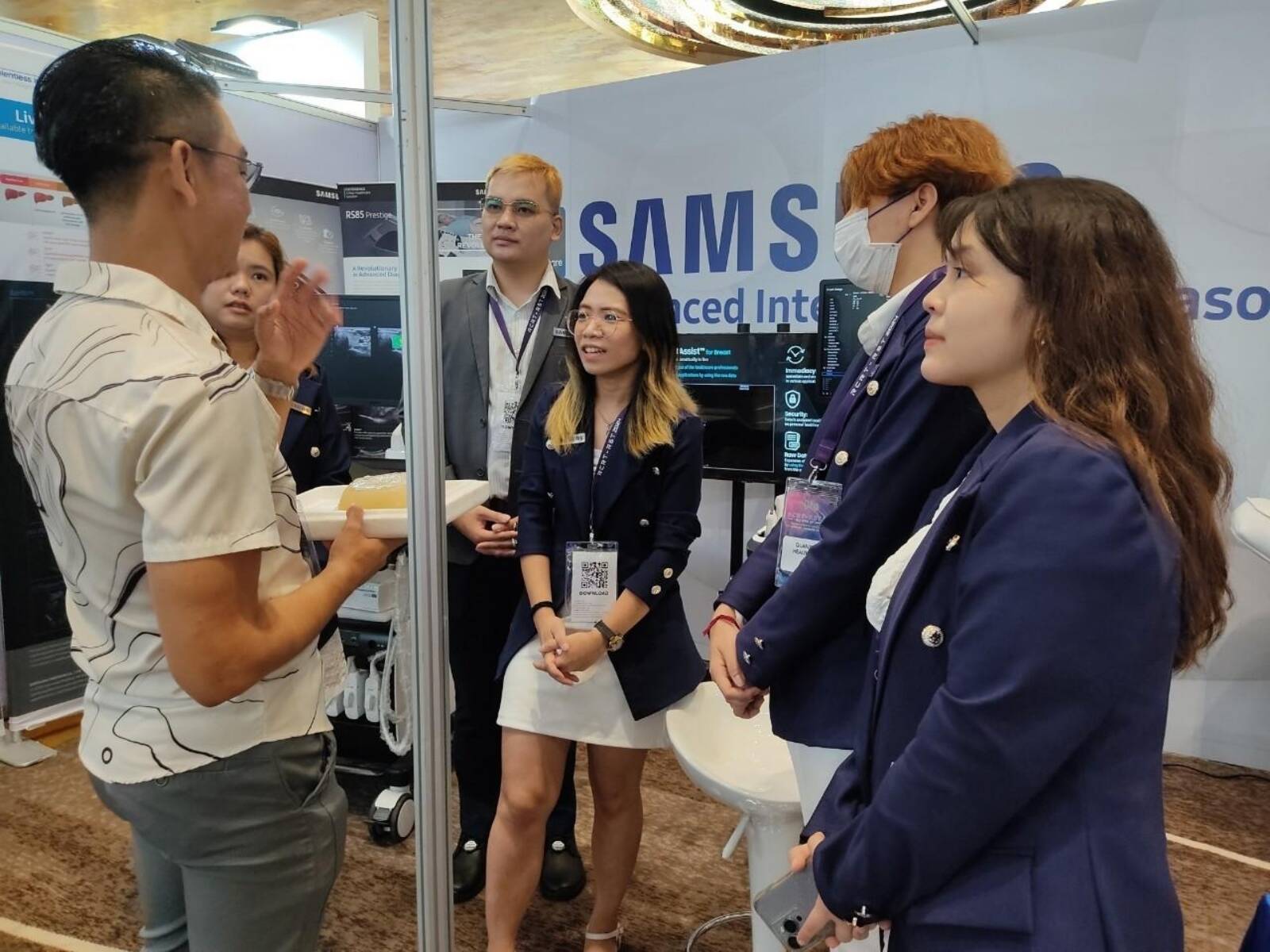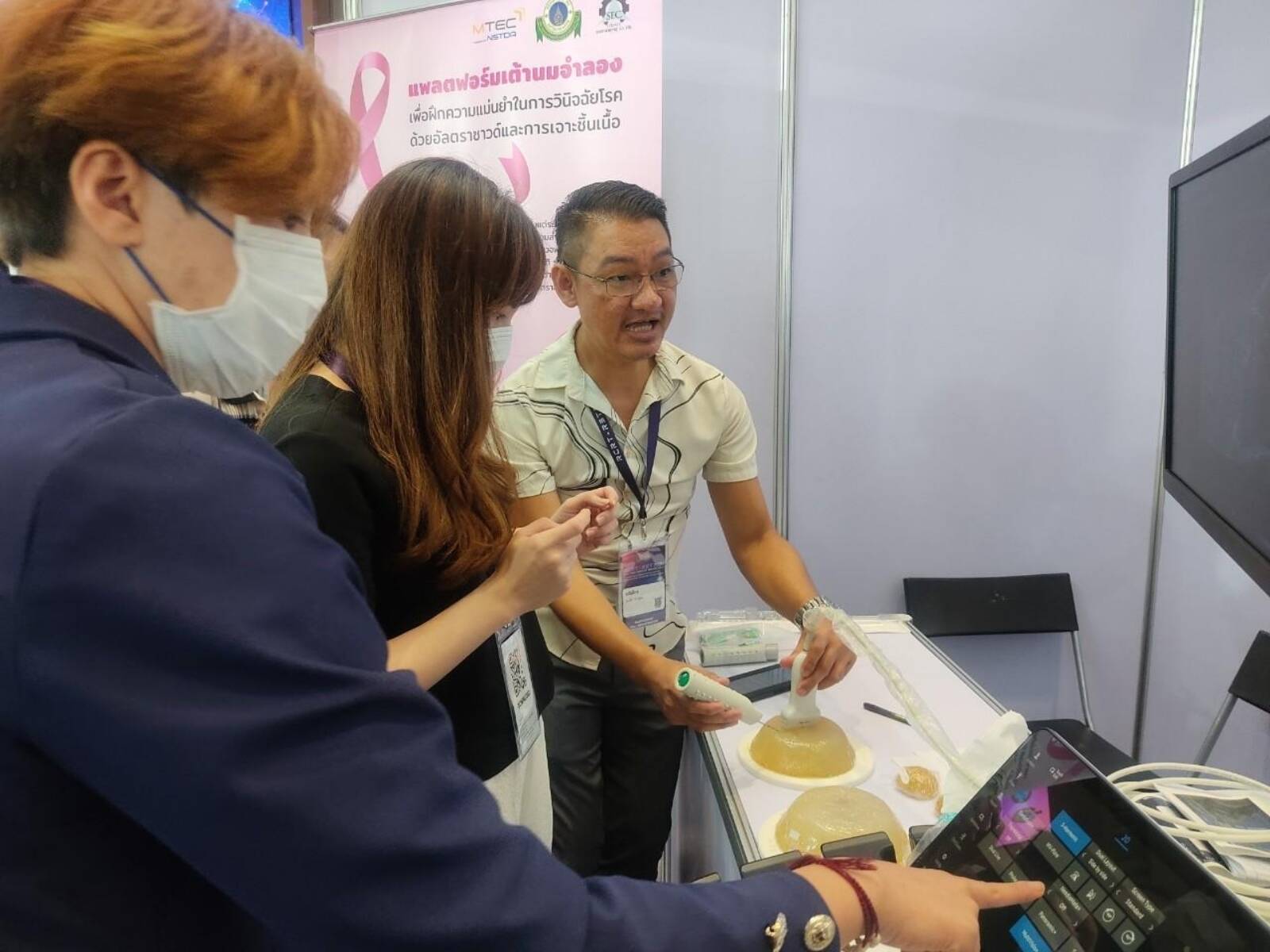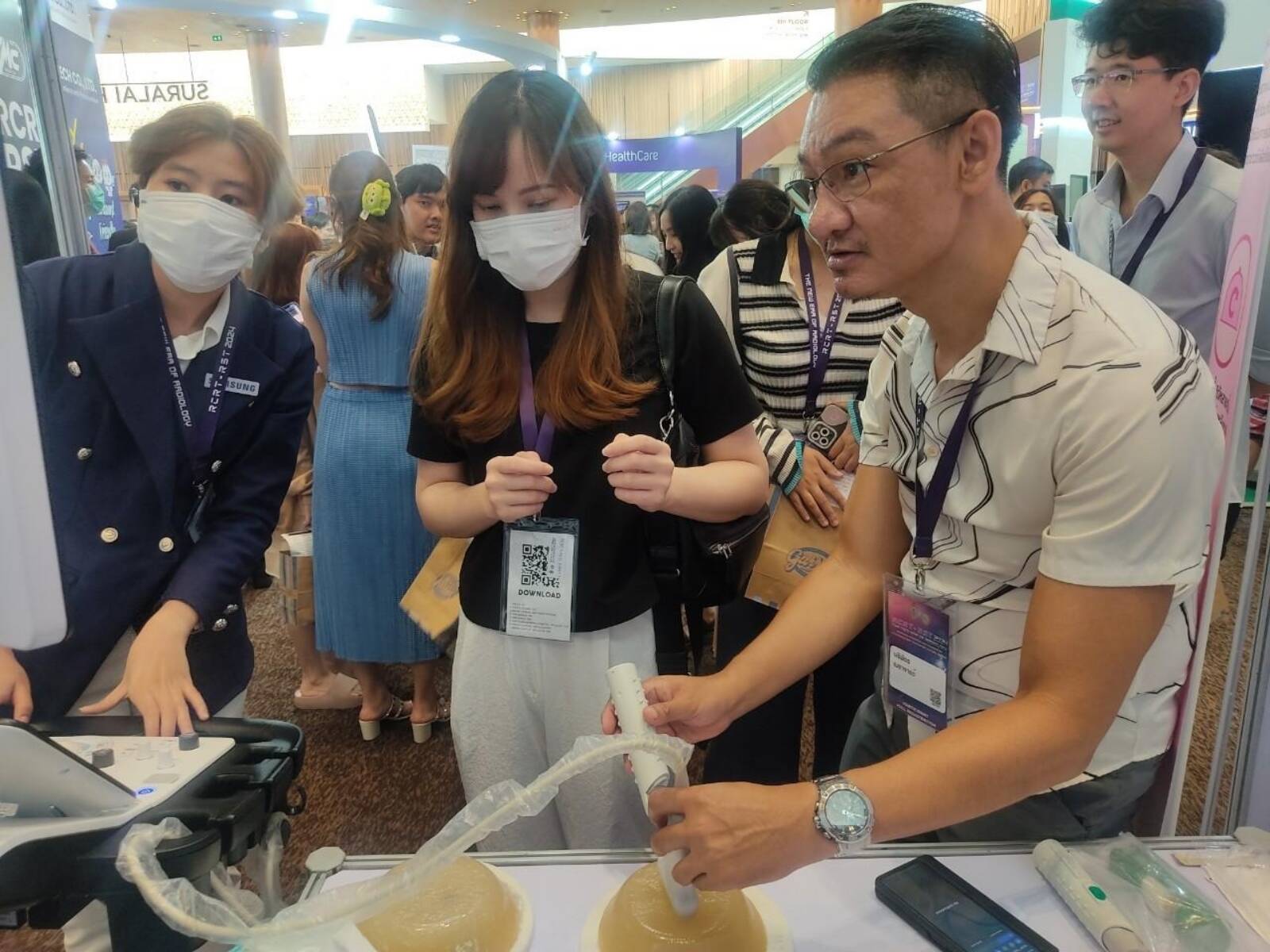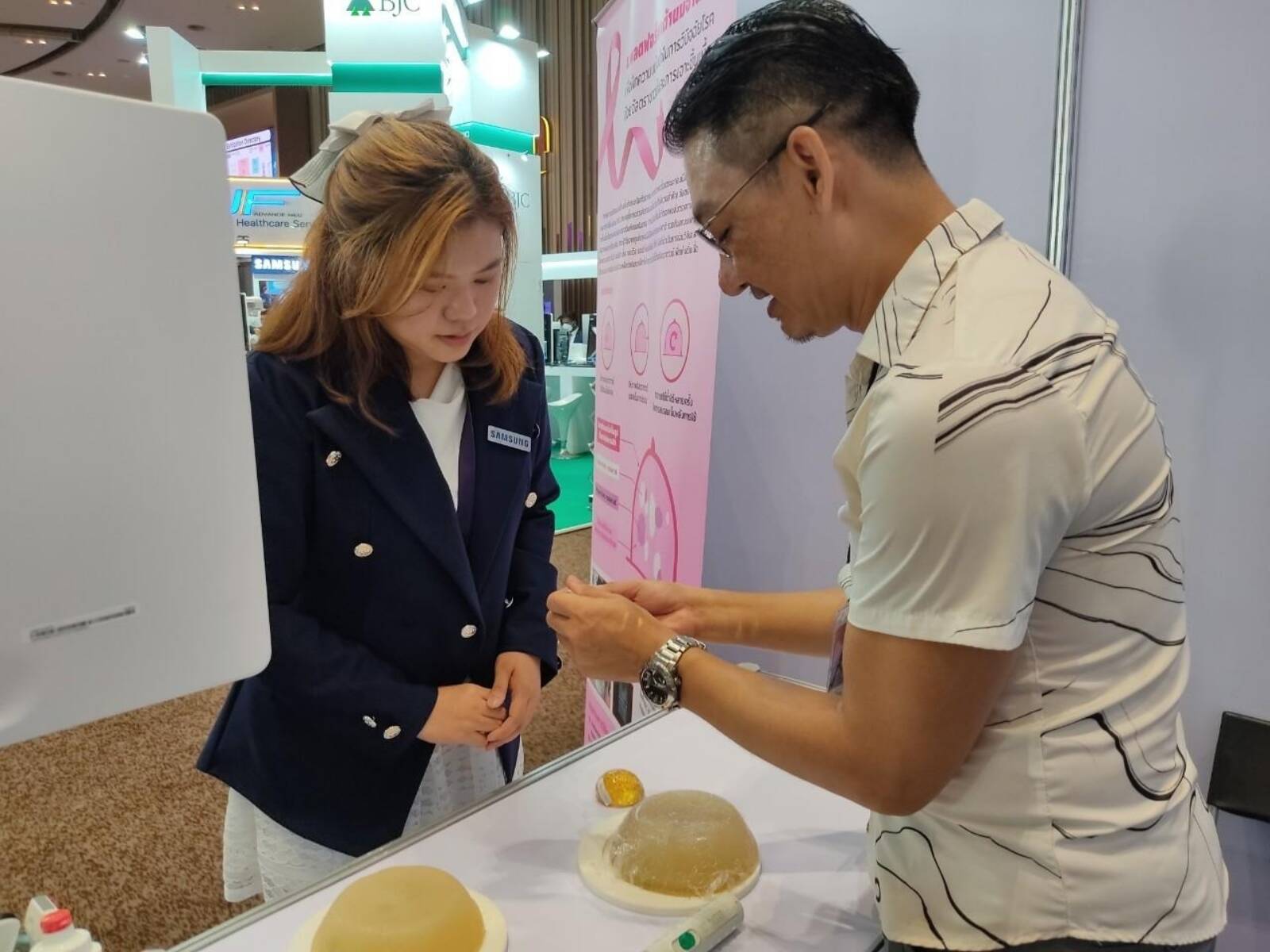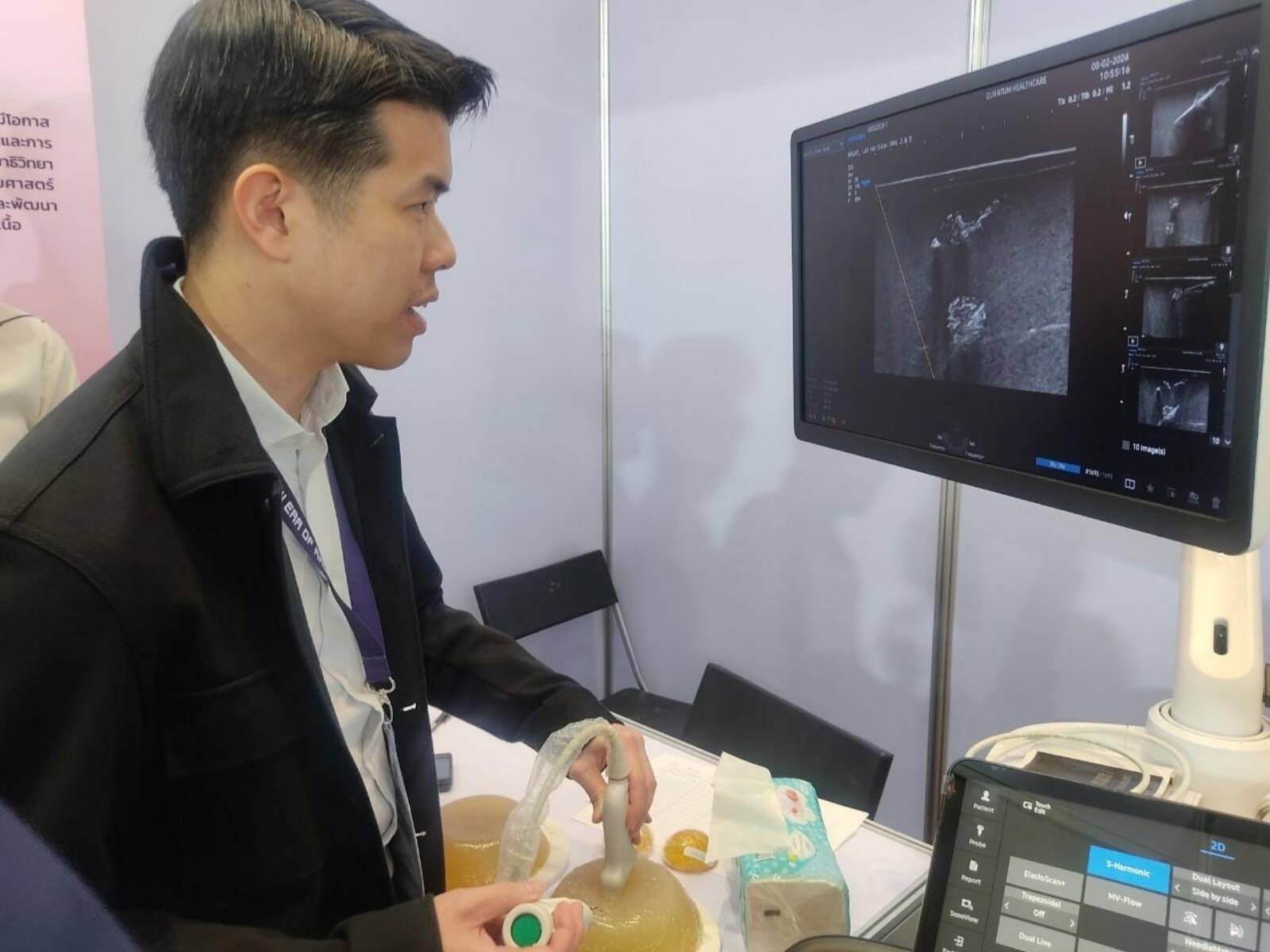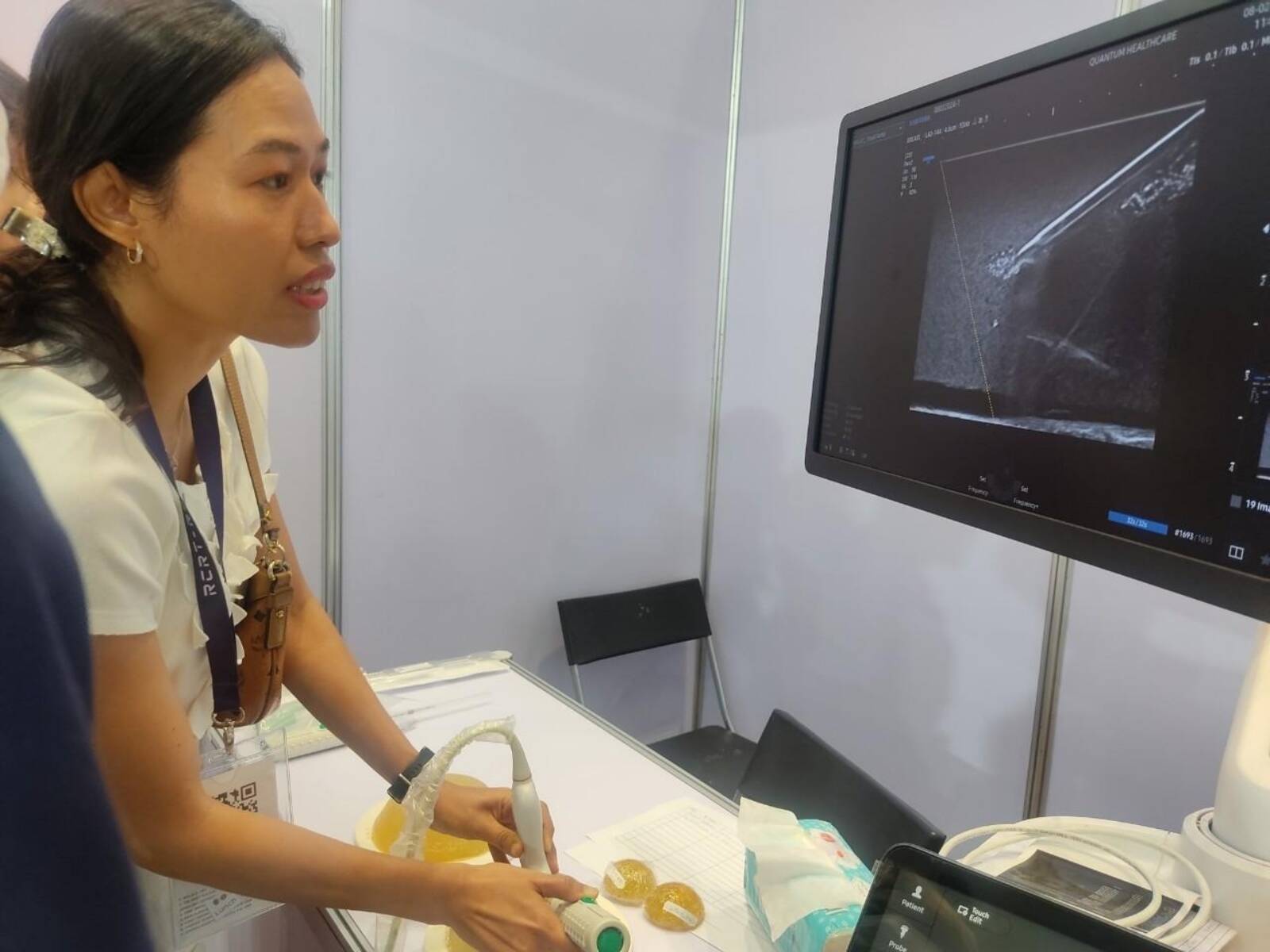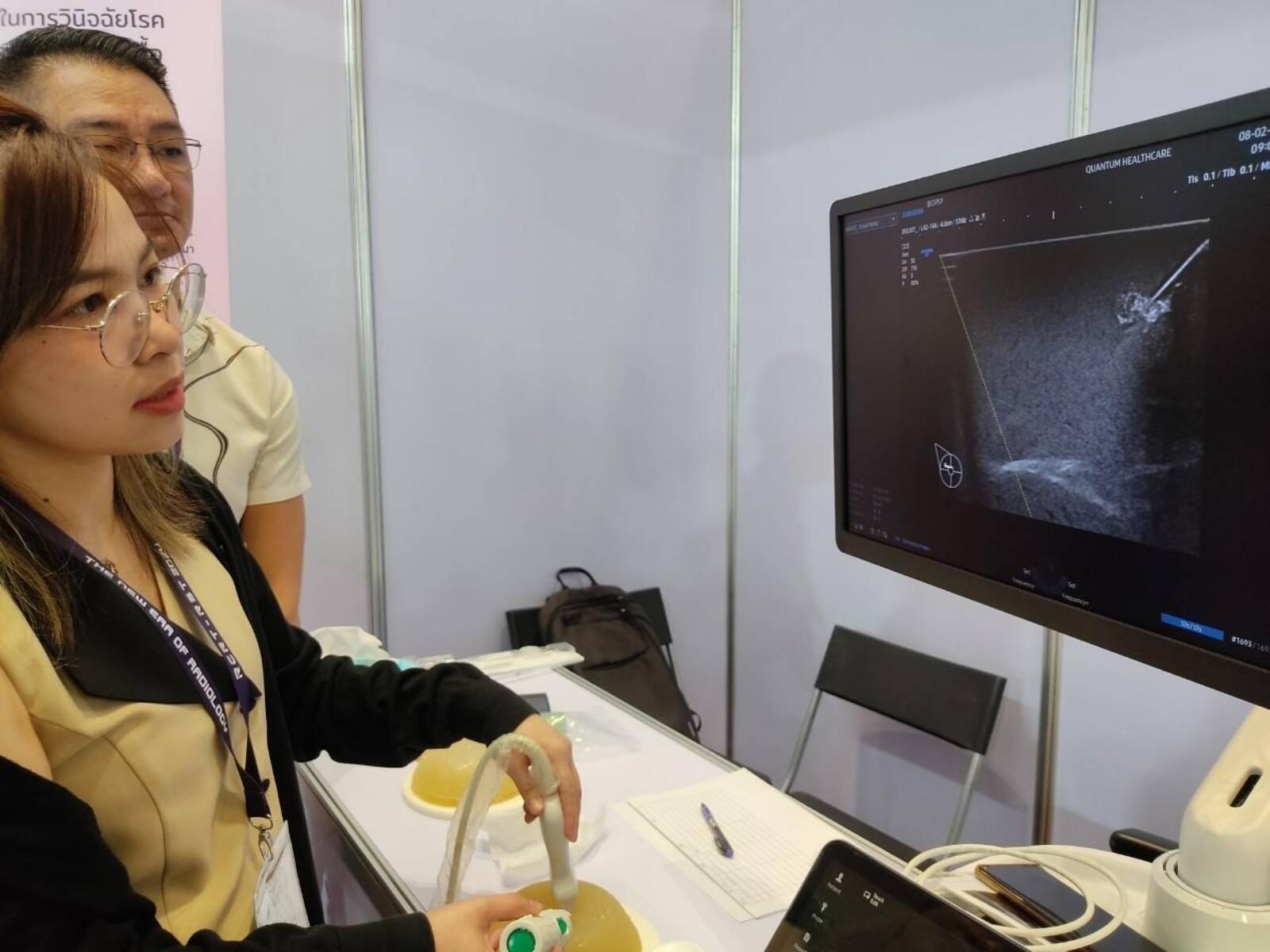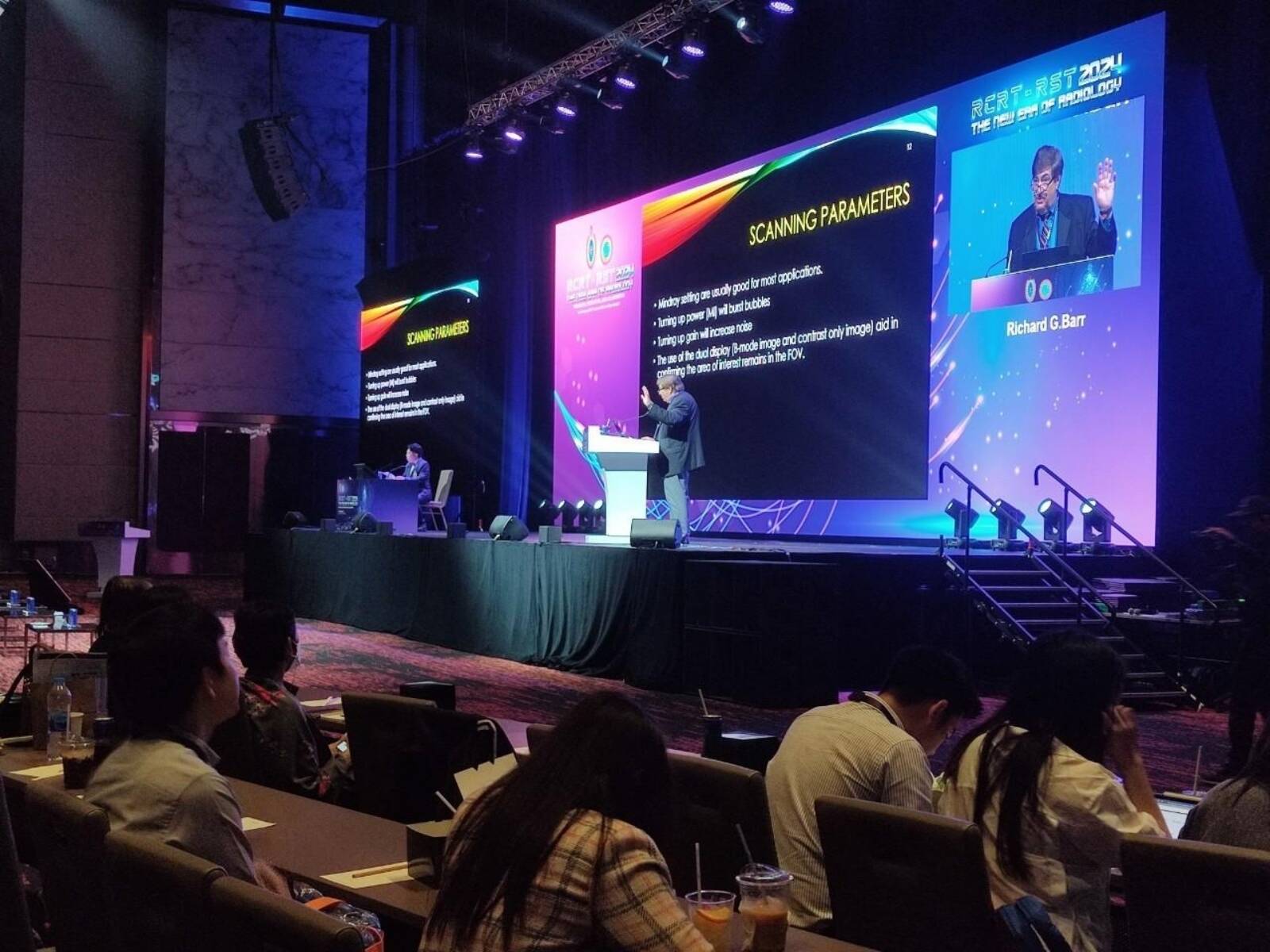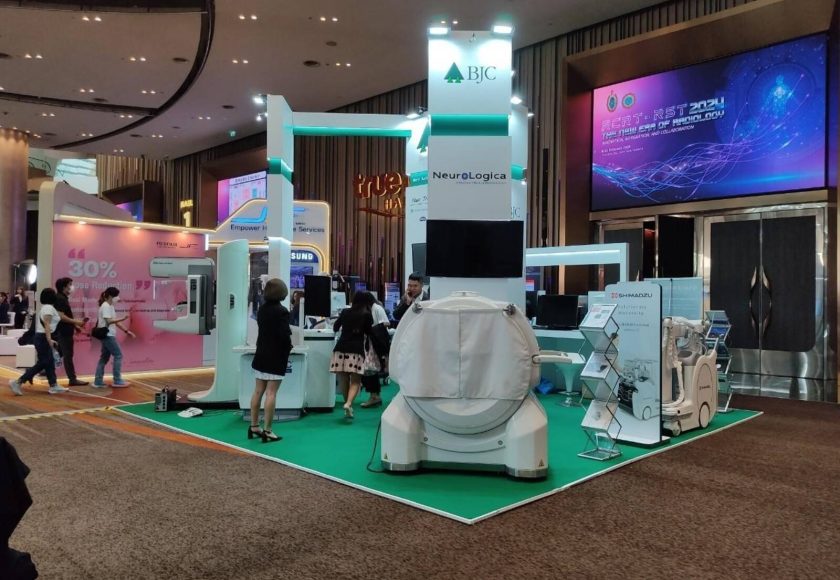
February 8 – 10, 2024, True Icon Hall, 7th floor, ICONSIAM, Bangkok
Dr. Boriphat Methachan, a researcher of the National Metal and Materials Technology Center (MTEC) under the National Science and Technology Development Agency (NSTDA), presented innovative medical training platforms at the 60th Annual Scientific Meeting of the Royal College of Radiologists of Thailand (RCRT) and the Radiological Society of Thailand (RST) 2024. These platforms utilized a simulated breast milk model. The theme of this meeting was “The New Era of Radiology: Innovation, Integration, and Collaboration,” reflecting the new era of radiology, which involves innovation, integration, and collaboration. The event showcased advancements in engineering design and computational research for specialized materials applications in engineering.
The innovative simulated breast milk model is the result of collaborative research with Professor Cholatip Wiratkapun, Dr. Jaruwan Aonwanna from the Department of Radiology, Faculty of Medicine, Ramathibodi Hospital, with Sec Services and Engineering Co., Ltd.
“Breast Simulation Platform for Improving the Accuracy of Ultrasound and Biopsy Diagnoses” Breast cancer prognosis heavily relies on the disease’s detected stage. Early detection, before symptoms manifest, yields nearly a 100 percent chance of recovery, underscoring the critical importance of breast cancer screening. In conjunction with mammograms, ultrasound, and biopsy techniques are commonly employed for detection. Tissue samples extracted during these procedures undergo pathological examination to chart further treatment strategies. A collaborative research effort between the National Metal and Materials Technology Center, Ramathibodi Hospital’s Faculty of Medicine, and Sec Services and Engineering Co., Ltd. led to developing a simulated breast platform. This platform facilitates needle biopsy training utilizing ultrasound for tissue collection. Offering explicit ultrasound imagery of tissue masses and biopsy needles, the platform can be reused multiple times by erasing needle marks. The platform’s key feature is a unique gel material with acoustic properties that mimic real breast tissue. It also incorporates two types of simulated tissue (hyperechoic and hypoechoic) and a flexible, 3D-printed silicone resin outer layer replicating human skin.
